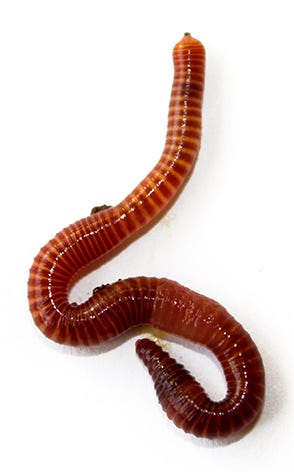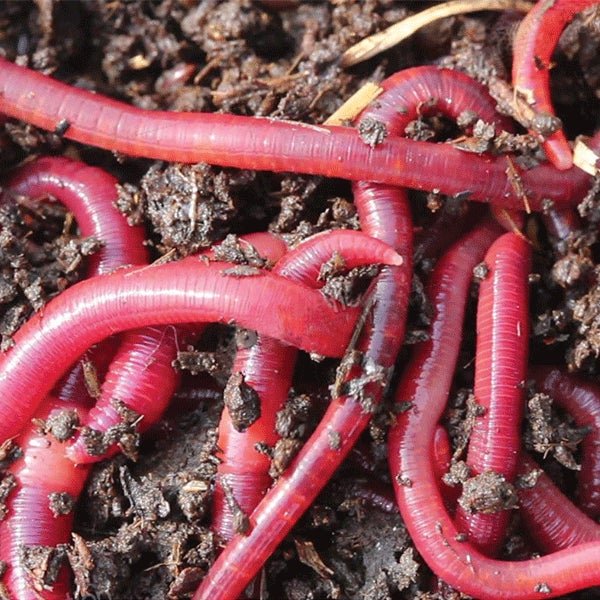Why Red Wigglers Are the Best Choice for Your Composting Needs
Red wigglers have emerged as a superior selection for composting due to their exceptional capacity to effectively decompose organic matter while creating top notch worm castings. The journey to effective vermicomposting entails more than simply getting these worms, and recognizing the ideal conditions and mistaken beliefs surrounding them is vital for maximizing their potential.
Advantages of Red Wigglers

Red wigglers flourish in a variety of problems, making them versatile to various composting setups, from tiny containers to bigger systems. They master vermicomposting, where their activity produces a high-quality final result recognized as worm castings, rich in valuable bacteria and nutrients vital for plant development. This natural fertilizer promotes soil health, enhances moisture retention, and boosts plant strength versus parasites and conditions.
In addition, utilizing red wigglers can considerably reduce methane exhausts related to landfill waste, contributing to environmental sustainability. Their simplicity of care and very little upkeep requirements make them suitable for both amateur and knowledgeable composters. Ultimately, incorporating red wigglers into your composting method not just fosters reliable waste monitoring however additionally boosts the top quality of your compost.
Suitable Composting Conditions
Producing ideal composting problems is necessary for making best use of the performance of red wigglers in damaging down raw material. These worms thrive in a regulated setting that simulates their natural environment, which mostly consists of wet, dark, and well-aerated areas. To achieve this, maintaining a temperature level array of 55 ° F to 77 ° F is vital, as extreme temperatures can prevent their activity or perhaps bring about mortality.
Moreover, the composting medium need to be maintained loosened and aerated, enabling appropriate airflow. This not just benefits the worms however also aids in the malfunction of organic products. By guaranteeing these suitable conditions, composters can develop a flourishing ecological community that boosts the effectiveness of red wigglers, ultimately leading to abundant, nutrient-dense garden compost.
How to Start Vermicomposting
Starting vermicomposting is a straightforward procedure that can yield considerable benefits for both your yard and the setting. To begin, pick a suitable container, such as a plastic bin or a wood box, ensuring it has ventilation holes for air movement. A size of approximately 15 to 20 gallons is optimal for small-scale procedures.
Following, prepare the bedding product, which need to be a blend of shredded paper, cardboard, and coconut coir. This bed linen gives a comfortable habitat for the worms while maintaining wetness. Aim for a bed linen deepness of about 4 to 6 inches.
Once the bedding is prepared, introduce red wigglers right into the bin. A populace of about 1,000 worms is enough for processing kitchen area scraps effectively. After adding the worms, integrate a well balanced mix of green materials, such as fruit and vegetable scraps, along with brown materials, like dried out leaves.

Nutrient-Rich Spreadings
Rich in necessary nutrients such as nitrogen, phosphorus, and potassium, worm spreadings supply a balanced source of fertility that improves dirt structure and advertises healthy and balanced plant development. Additionally, they consist of valuable microbes that even more improve dirt health and wellness, assisting in nutrient absorption and disease resistance.
The slow-release nature of worm castings ensures that nutrients are available to plants over an extensive duration, lowering the threat of nutrient leaching and therefore adding to sustainable gardening practices. Unlike synthetic fertilizers, which can lead to dirt degradation over time, worm castings improve the soil's physical, chemical, and organic buildings.
Therefore, integrating red wigglers into your composting efforts not just reduces waste but additionally creates a costs organic amendment that substantially benefits gardens, landscapes, and potted plants alike. - red wigglers
Usual False Impressions Regarding Worms
While many individuals acknowledge the advantages of utilizing worms in composting, several misconceptions linger regarding their biology and actions. One usual misconception is that all worms are just as efficient for composting, when in truth, only certain varieties, like red wigglers, thrive in organic waste environments. These worms are particularly adapted to composting, learn this here now making them excellent for this purpose.
Another misunderstanding is that worms are fragile and call for excessively specific conditions to make it through. In truth, red wigglers are fairly resilient, able to endure a series of temperatures and moisture degrees, given they are kept within a suitable array.
Furthermore, some believe that worms eat all sorts of food waste indiscriminately. However, red wigglers prefer specific natural products, such as fruit and vegetable scraps, and can fight with meat, milk, and oily foods, which can develop smells and draw in bugs.
Verdict
To conclude, red wigglers stand for an ideal selection for composting as a result of their fast decomposition abilities and flexibility to numerous atmospheres. The nutrient-rich castings produced considerably improve dirt wellness, promoting lasting gardening techniques. Comprehending the suitable problems for vermicomposting and resolving usual misconceptions about these worms further strengthens their duty in efficient waste management. red wigglers. By leveraging the advantages of red wigglers, people and neighborhoods can add to a more lasting and environmentally friendly approach to organic garbage disposal.
Comments on “Best red wigglers: For organic waste solutions”